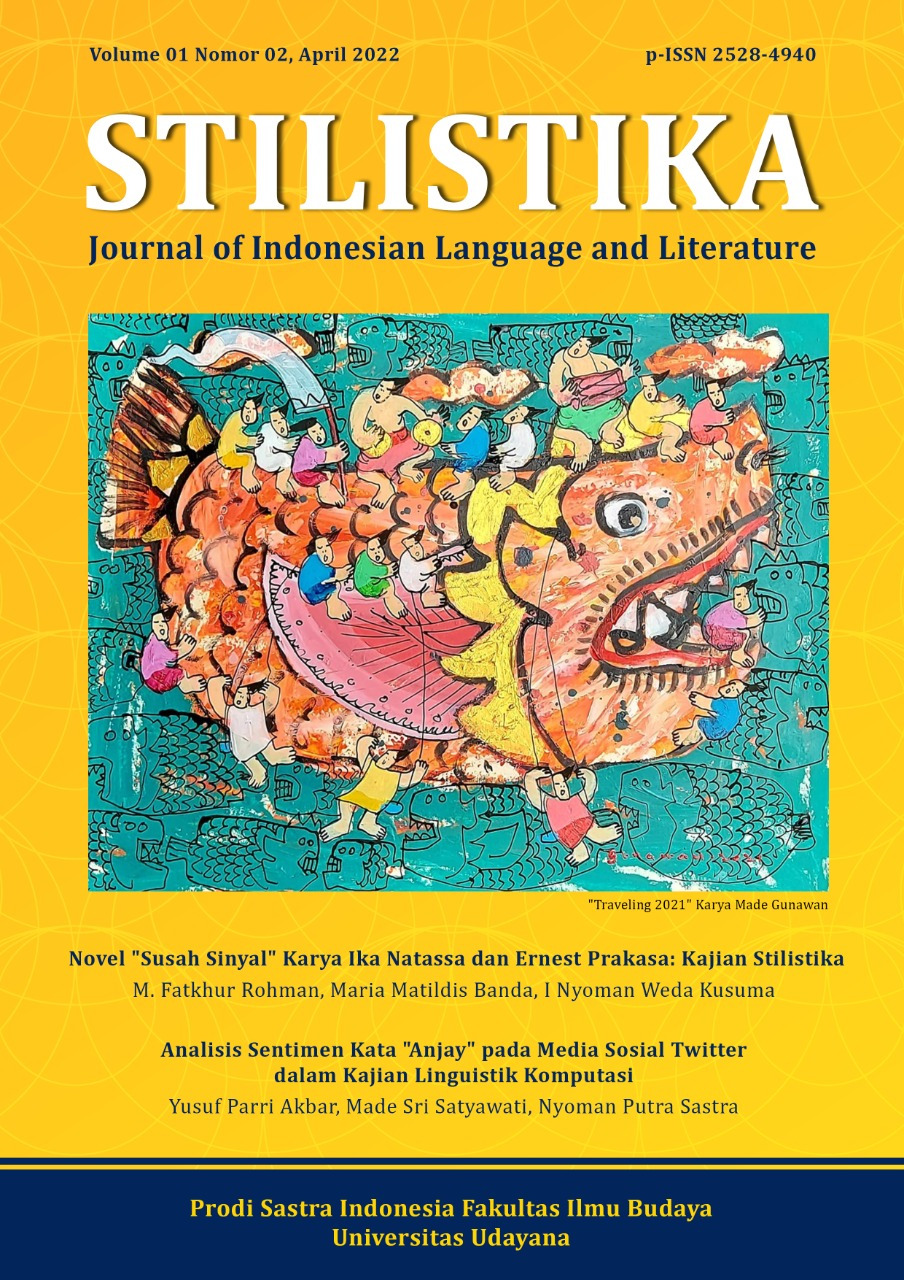Children’s Language Learning Vocabulary Through Mobile Applications: Duolingo
Abstrak
This research article aims to investigate how the influence of Duolingo can help improve children’s vocabulary. The data were obtained from the 10 children of 7th graders as the sample that was collected in 1 main place that was the researcher’s house to make it easier to collect and observe the data. This study used the theory of language learning proposed by Halliday (1978). This study used a pre-experimental research design with a pre-test and post-test. The 10 children as the sample were practicing using Duolingo apps for 10 days, during which they had to answer 1 lesson consisting of 10 to 15 exercises every day. The collected data in this study were quantitatively analyzed by observing the children that consisted of some procedures. This study used two research instruments, namely, tests and questionnaires to answer the research questions. How can Duolingo help children improve their vocabulary? Furthermore, to present the data, this study used the tables and charts which were elaborated with symbols and numbers, to ensure validity and reliability, and described the ethical consideration in terms of the involvement of the respondents. The result of this study showed that by using Duolingo as a learning medium, children can master most of the vocabulary from all the given exercises. The scores they obtained for the post-test were much higher than the scores for the pre-test.
##plugins.generic.usageStats.downloads##
Referensi
Basuki, Y. 2017. The Requisite Vocabulary 1 Material for College Students of Stkip â?? Pgri Trenggalek. Karya Ilmiah Dosen, 3(1).
Booton, S.A., Hodgkiss, A., & Murphy, V.A. 2021. The impact of mobile application features on children’s language and literacy learning: a systematic review. Computer Assisted Language Learning. https://doi.org/10.1080/09588221.2021.1930057
Habibie, A. 2020. Duolingo As An Educational Language Tool To Enhance Efl Students’ Motivation In Writing. British (Jurnal Bahasa dan Sastra Inggris), 9(1), 13-26.
Halliday, M. A. K. 1975. Learning how to mean. In Foundations of language development (pp. 239-265). Academic Press.
Halliday, M.A.K. 1978. Language as Social Semiotic: the social interpretation of language and meaning. London: Edward Arnold.
Nushi, M., & Eqbali, M. H. 2017. Duolingo: A Mobile Application to Assist Second Language Learning. Teaching English with Technology, 17(1), 89-98.
Puspita, N., & Sabiqoh, N. 2017. Teaching vocabulary by using crossword puzzle. English Education: Jurnal Tadris Bahasa Inggris, 10(2), 308-325. https://doi.org/10.24042/ee-jtbi.v10i2.1753
Sudipa, I.N. 2021. Bahasa Inggris Akademik. English for Academic Purposes. 1-18.
Thwaite, A. 2019. Halliday’s View of Child Language Learning: Has it been Misinterpreted? Australian Journal of Teacher Education, 44(5). http://dx.doi.org/10.14221/ajte.2018v44n5.3



